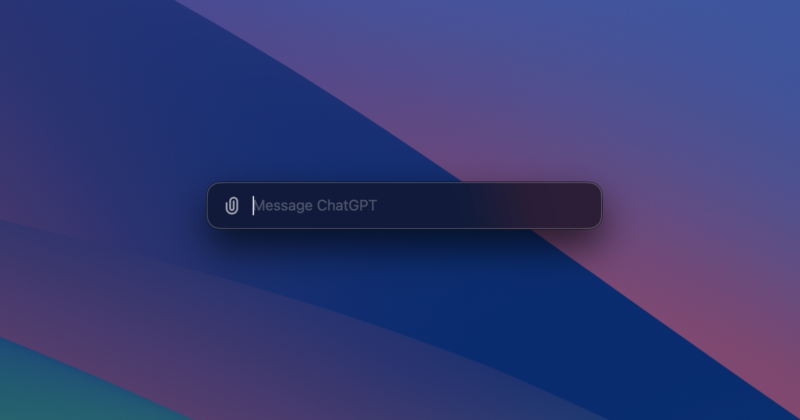
Samuel Axon
OpenAI’s official ChatGPT app for macOS is now available to all users for the first time, provided they’re running macOS Sonoma or later.
It was previously being rolled out gradually to paid subscribers to ChatGPT’s Plus premium plan.
The ChatGPT Mac app mostly acts as a desktop window version of the web app, allowing you to carry on back-and-forth prompt-and-response conversations. You can select between the GPT-3.5, GPT-4, and GPT-4o models. It also supports the more specialized GPTs available in the web version, including the DALL-E image generator and custom GPTs.
There is one important omission in this desktop app: It doesn’t support using the API. For that, those wanting a desktop app will still need to use a third-party one like Jordi Bruin’s MacGPT.
OpenAI’s app lets you enable a system-wide keyboard shortcut (option + space by default) to type in a prompt any time; it works a bit like opening a Spotlight search in macOS.
It was announced alongside the GPT-4o model, which is faster and cheaper to use than GPT-4 with similar (albeit not exactly the same) accuracy and quality, and which expands the model’s ability to interact with images and videos.
At the same time it unveiled GPT-4o and the Mac app, OpenAI demonstrated a new, conversational approach to voice chatting with ChatGPT. That’s not yet widely available, but it’s said to be coming soon. For now, the Mac app supports the old style of back-and-forth voice chats with the chatbot.
The Mac app is unavailable in the Mac App Store, but you can download it directly from OpenAI’s website.
Note that, like the iPhone or Android ChatGPT app, this is distinct from the ChatGPT integration coming to Apple’s operating systems this fall. That integration will see Siri referring users to ChatGPT (and possibly alternative models in the future) to answer queries that are outside Siri’s usual scope, and it will be baked into the operating system.
There’s still no Windows app. Why not? At least one report claimed that OpenAI prioritized a Mac app over a Windows app “because that’s where most of its users are.” Of course, Windows users aren’t hurting for AI chatbot options, as Microsoft has been throwing ChatGPT-powered Copilot into everything it can of late.
